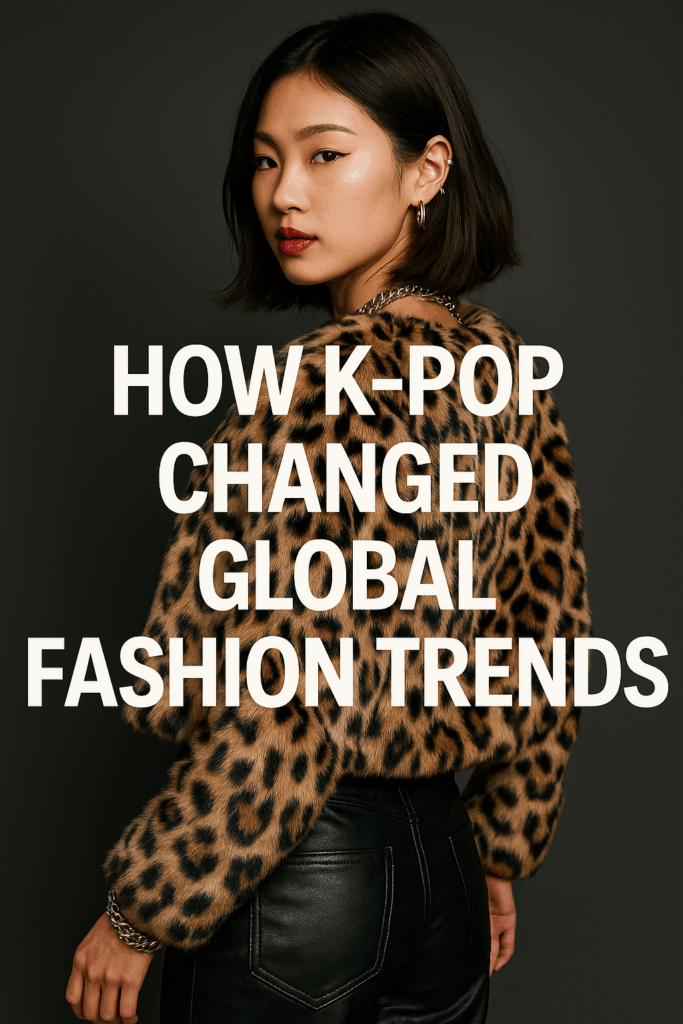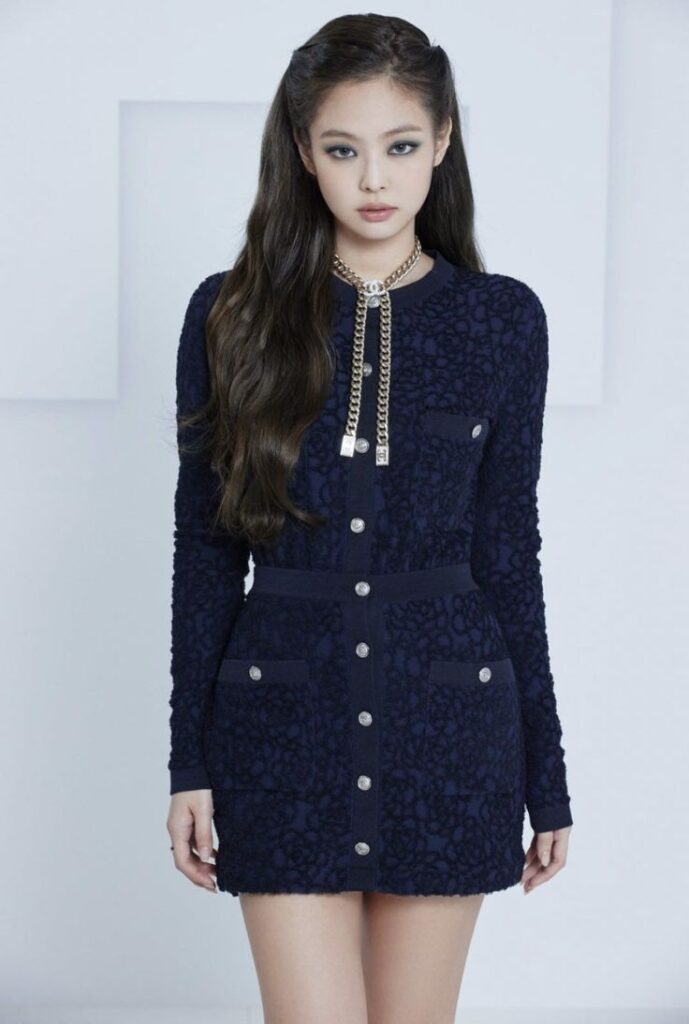K-Pop Fashion Trends have transformed how the world dresses — from Seoul’s streetwear to global runways.
The Rise of K-Pop Fashion Trends as a Global Power
Fashion once flowed from Paris and Milan.
But in the 2020s, K-Pop Fashion Trends from Seoul joined the conversation — and idols became the new tastemakers of the world.
From airport outfits to red-carpet couture, K-Pop idols now shape global fashion.
It’s no exaggeration to say that K-Pop Fashion Trends turned Seoul into the new runway of the modern world.
Just a decade ago, Korean fashion was niche.
Today, BTS, BLACKPINK, NewJeans, and Aespa are redefining style for an entire generation — fusing genderless silhouettes, streetwear comfort, and high-end elegance into a new visual language.
From Seoul’s streets to Milan’s catwalks, K-Pop Style has become a cultural movement that represents freedom, confidence, and creative storytelling.

From Practice Room to Runway: The Evolution of K-Pop Fashion Trends
It’s fascinating that what began as stage styling — glitter jackets, military uniforms, oversized blazers —
has now spilled into everyday fashion.
Fans began replicating idol looks, and soon, retail brands started adapting K-Pop Fashion Trends to global markets.
Luxury houses noticed too.
BLACKPINK’s Jennie became the “Human Chanel.”
BTS fronted campaigns for Louis Vuitton and Dior.
NewJeans collaborated with Gucci and Levi’s.
The message was clear: K-Pop Fashion Trends don’t follow the runway — they lead it.
This fusion of idol charisma and fashion design has reshaped the world’s perception of what modern style means.

The Streetwear Revolution in K-Pop Fashion
One of K-Pop Fashion’s biggest cultural exports is streetwear — an effortless mix of athleticism and artistry.
Baggy jeans, cropped tops, varsity jackets, and chunky sneakers dominate both Seoul and Los Angeles.
Streetwear in K-Pop Fashion Trends isn’t just about looking cool.
It’s about freedom and identity — expressing confidence, rebellion, and youth.
When fans copy those looks, they’re not just dressing up;
they’re connecting with a lifestyle and a story.
Amazon Picks Inspired by K-Pop Streetwear
- Adidas Originals Oversized Track Jacket on Amazon
- Chunky Platform Sneakers for Women on Amazon
- Unisex Cargo Pants with Street Fit on Amazon
These items reflect the DNA of K-Pop Fashion Trends — casual yet bold, simple yet statement-making.

The “Idol Effect” on Global Brands
Fashion brands now design for K-Pop, not just with K-Pop.
Campaigns featuring idols boost global sales within hours — the so-called “Idol Effect.”
When BTS wore pastel suits, Zara’s similar line sold out in a week.
When Lisa posted a Celine outfit, web searches for that jacket jumped 400%.
This phenomenon blurred the line between music fandom and fashion marketing.
Idols don’t just promote fashion — they translate luxury into emotion.
That’s the essence of K-Pop Fashion Trends — merging accessibility with aspiration.
My Reflection: Why K-Pop Fashion Feels Different
What makes K-Pop Fashion Trends feel different is the storytelling.
Every outfit has a message — reflecting an emotion, an era, or an alter ego.
When Jimin wears a cropped blazer, it’s rebellion and grace in one.
When Jennie mixes pearls with denim, it’s elegance meeting independence.
This duality — soft yet strong, simple yet daring —
is what makes K-Pop Fashion irresistibly modern and universally admired.
K-Pop Fashion Trends taught the world that clothing isn’t just about appearance — it’s about confidence and connection.
That’s why people who don’t even speak Korean still dress like idols.
Because style speaks louder than language.
The Future of K-Pop Fashion Trends
The next phase of K-Pop Fashion Trends is already here —
AI idols, virtual fashion shows, and digital wearables are redefining the industry.
Fans are buying NFT outfits that match their favorite idols’ avatars.
Seoul-based designers are partnering with Metaverse platforms to expand the reach of K-Pop Fashion.
Soon, we might see a K-Pop group launching their own digital clothing line — worn by both real and virtual fans.
“K-Pop doesn’t follow trends. It creates them — online and offline.”
The future of K-Pop Fashion Trends proves that creativity has no borders —
and that Seoul remains the beating heart of global style.
Q1. What makes K-Pop Fashion Trends unique?
K-Pop fashion blends performance and storytelling. Every outfit reflects an idol’s persona, mixing luxury with streetwear to create emotion-driven style.
Q2. Which brands collaborate most with K-Pop idols?
Chanel, Dior, Gucci, Celine and more frequently work with BLACKPINK, BTS, and NewJeans, translating runway aesthetics into global pop culture.
Q3. How did K-Pop streetwear become global?
Concerts and social platforms helped fans replicate idol looks, turning K-Pop streetwear into a universal expression of confidence and youth.
Q4. What’s next for K-Pop fashion?
Digital clothing, metaverse runways, and AI-idol collaborations—K-Pop Fashion Trends will expand online and offline at the same time.
